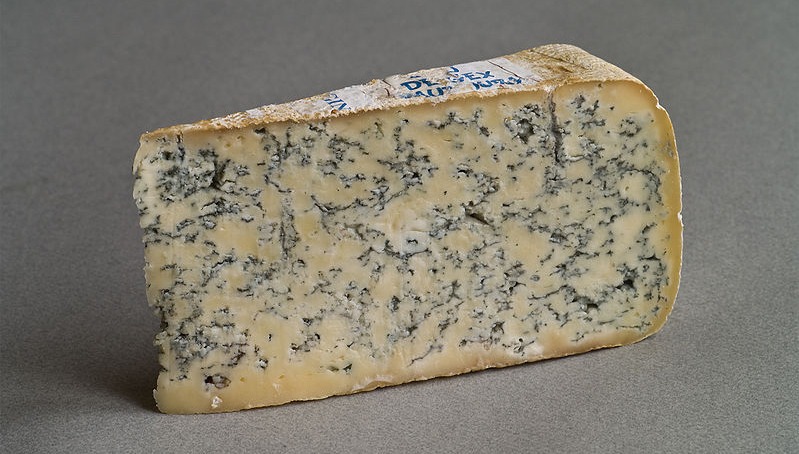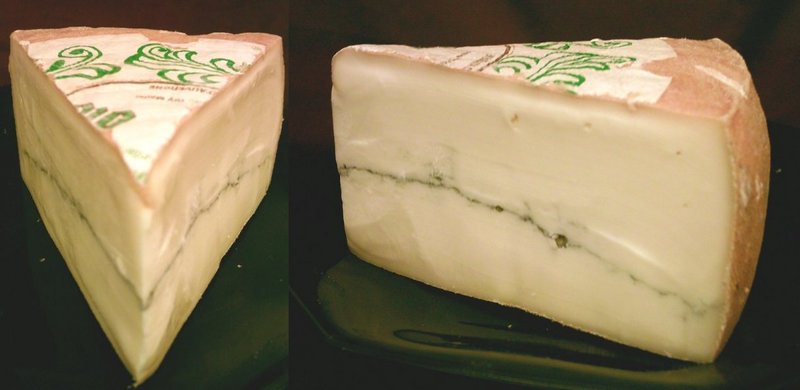So many good things can happen if you eat more cheese. Rich, creamy cheeses are what make dishes like raclette, gooey macaroni, and pizza with fresh mozzarella great. And for people who want to try foods from all over the world, cheese gives them a wide range of tastes and textures to try.
Anyone who knows the basics about cheese knows about the usual choices. Parmesan, Gouda, sharp cheddar… You see these all the time at your grocery store. But no matter how sophisticated your cheese tastes are, you will never, ever see some cheeses in an American grocery store. Why? Because these cheeses are actually against the law in the United States.
French Cheeses that are Illegal in US
The Food and Drug Administration has a lengthy and detailed set of cheese regulations. The majority of the banned cheeses are illegal in the United States because they are made with unpasteurized milk, or raw milk. The FDA considers these milks to be a public health concern. Foodborne pathogens can multiply and spread; pasteurization kills these germs. Some cheeses are also prohibited for other health reasons. You might be surprised to learn about the germy cheeses that people eat abroad but cannot legally buy in the United States.
1. Bleu de Gex
This is a kind of blue cheese, but it’s more than that. This blue-veined, creamy, semi-soft cheese is made in the Jura region of France from milk that has not been pasteurized. It is aged for at least three weeks. You can only call a cheese Bleu de Gex if it was made with milk from cows in the town of Montbéliard and aged with a certain kind of mold. Because of these different steps, the cheese is much stronger and tastes better than other blue cheeses. All rounds of Bleu de Gex have the word “Gex” stamped on them. But if you buy a Gex-stamped cheese in the U.S., you could get in trouble with the law. Because it was made with milk that wasn’t pasteurized, this cheese can’t be sold in the United States.
2. Brie de Meaux
It is said that Louis XVI’s last wish was to taste the cheese because it is so good. But you haven’t lived until you’ve tried this special kind of the famous French cheese. Brie de Meaux, which comes from the town of Meaux, is different from regular brie because it is made with cow’s milk that has not been pasteurized. Because of that, it is also against the law in the United States. But if you go to Europe, you can try cheese that is good enough for kings.
3. Camembert de Normandie
The kind of Camembert you’re used to seeing on store shelves has been modernized and doesn’t use raw milk anymore. The first Camembert, however, is said to have been made by Marie Harel in 1791 with milk that had not been pasteurized. Some small-scale producers still use this method and sell the cheese as Camembert de Normandie, which must be made with raw milk from the Normande breed of cattle. You’d have to go somewhere else to find out if pasteurization changed the taste. In the U.S., only the pasteurized version is available.
4. Casu marzu
Casu marzu means “rotten cheese,” which is an accurate way to describe it. This sheep’s-milk cheese from the Italian island of Sardinia has live maggots in it. After the cheese has been made, it is left to go bad in swarms of fly larvae. This changes the way the cheese feels, making it soft and letting liquid seep out. This cheese is against the law not just in the United States but also in the whole European Union. Since maggots can live in the intestine, eating this cheese is very dangerous to your health. If you really want to try the round of casu marzu with the flies on it, you’ll have to risk getting fined a lot by buying it on the black market. Oh, and you could get pseudomyiasis, which is a condition that can happen if you eat those bugs.
5. Crottin de Chavignol
This goat cheese is the most well-known of the many kinds made in the Loire Valley. It is made in Chavignol, France, a small town with only 200 people. As this cheese ages, it gets harder and tastes better. The color also gets darker over time, making these tiny bits of cheese look like cow dung. One idea about how this cheese got its name is that “crottin” is related to the French word “crotte,” which means animal dung. However, it’s not banned because it looks gross; it’s banned because it’s made from raw milk.
6. Morbier
Morbier gets its name from a French town in the Franche-Comté region. In this area, cheeses are made with a black line through the middle that looks like ash. Traditionally, this line was made of real ash and was used to separate cheese made from cow’s milk that was milked in the morning from cheese made from cow’s milk that was milked in the evening. Now, though, it’s made with food coloring, and only one batch of milk is used. Still, the cheese’s slightly bitter aftertaste makes it stand out. Traditionally, the cow’s milk used is not pasteurized, but in the U.S., only pasteurized milk is available.
7. Époisses
The way Epoisses is made is based on what Cistercian monks taught them in the 1600s. The process has been improved over many generations, and it is now one of the most popular cheeses in all of France. That might not sound like a big deal, but since Époisses stinks, it really is. It smells so bad that Murray’s Cheese says the French word for it means “stinky but incredibly loveable,” even though it’s just the name of a town. Even though it smells bad, people all over the world love this creamy cow’s-milk cheese. In the U.S., you can buy Époisses that have been pasteurized, but you can only get the original kind that hasn’t been heated.
8. Mimolette
Even though the name is pretty, the cheese isn’t. The outside of this cheese looks like it has craters, and the inside is a deep orange color that makes some people think of Mars. But mimolette, a French cheese from Lille, is a special treat for people who like cheese. But if the thought of eating bugs grosses you out, you won’t want to try it. Traditionally, mites are put on the outside of mimolette to improve the flavor. According to NPR, the FDA stopped importing the cheese in 2013 because it had so many mites, which could cause allergic reactions. Since then, imports have started up again, but no one seems to know why, since the FDA ruling is still in effect. Even though it’s not supposed to be in the U.S., you can find mimolette there.
9. Pouligny-Saint-Pierre
This cheese is sometimes called “Eiffel Tower” or “pyramid” because it is sold and shipped in a shape that looks like a pyramid instead of a wheel like most other cheeses. It’s a French goat cheese from the Loire Valley that smells musty and tastes sour to sweet. It’s not something you can do in the United States, though, because goat’s milk is not pasteurized.
10. Reblochon
Reblochon is a French mountain cheese. The cheese is made with full-cream, unpasteurized milk, and it is rich and flavorful. Tartiflette is a traditional French dish from the Savoy region of the Alps. You can’t make it without the cheese. But because it isn’t pasteurized, Americans have to go to other countries to try it.
11. Roquefort
Roquefort is one of the most well-known blue cheeses in the world. It is soft and crumbly, with a sharp, tangy taste. It is only made in caves in the south of France, where it ages for a long time. It is also made from sheep’s milk that has not been pasteurized, so it is illegal in the United States.
Why are Certain Cheeses Illegal in the USA?
Cheese lovers and foodies all over the world are shocked to learn that the USA bans perfectly good cheeses. In fact, the US has banned some of the most popular cheeses in the world, like brie.
This is because the FDA has strict rules about food that is imported. The FDA is in charge of food and drugs in the United States. It is known for having rules about imported food that are too strict and seem to limit US food compared to the rest of the world. The USA doesn’t allow any unpasteurized cheese because it’s seen as dangerous to health. However, this means you can’t get a lot of tasty cheeses that must be made from raw milk. People in the USA can enjoy versions that have been pasteurized, but these are often said to not be as good as the real thing.
Due to the amount of bacteria in cheeses, the FDA also bans them. Bacteria are needed to make a lot of cheeses, especially blue cheeses, so this may seem silly to people who like cheese outside of the USA. Because E. coli bacteria is found in French cheeses like Roquefort, the FDA has banned them, even though the bacteria is harmless. The FDA says that its rules are the same as those in the rest of the world, but other countries don’t have such low levels of bacteria tolerance. The FDA actually lowered the amount of bacteria that can be in cheese from 100MPN to 10MPN. This means that many cheeses can’t be sold in the USA.
Even though this seems crazy to us, it is also crazy and unfair to many people in the US who love cheese, especially soft French cheeses. Of course, many foodies and high-end restaurants will try to get around the ban. It is possible to get delicious unpasteurized cheese in the US if you know where to go and how to ask.
Conclusion
Because it is against the law, you can’t find French cheeses made with raw milk in the US. Raw milk cheese can’t be sold in the United States until it has been aged for at least 60 days. The Food and Drug Administration has rules about this. Scientists think that the acids and salts in raw-milk cheese and the aging process stop listeria, salmonella, E. coli, and other dangerous bacteria from growing after 60 days.


